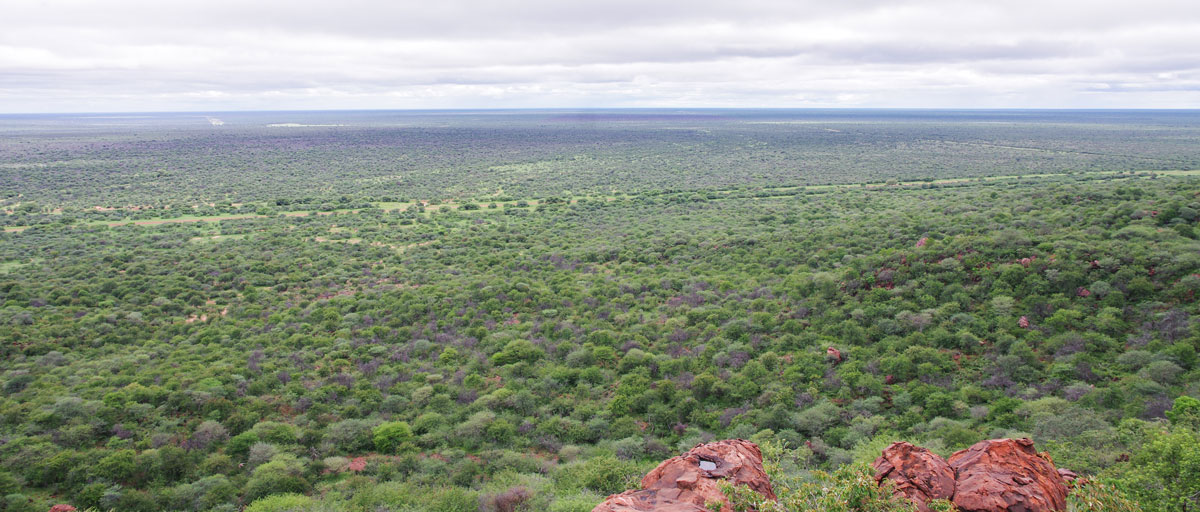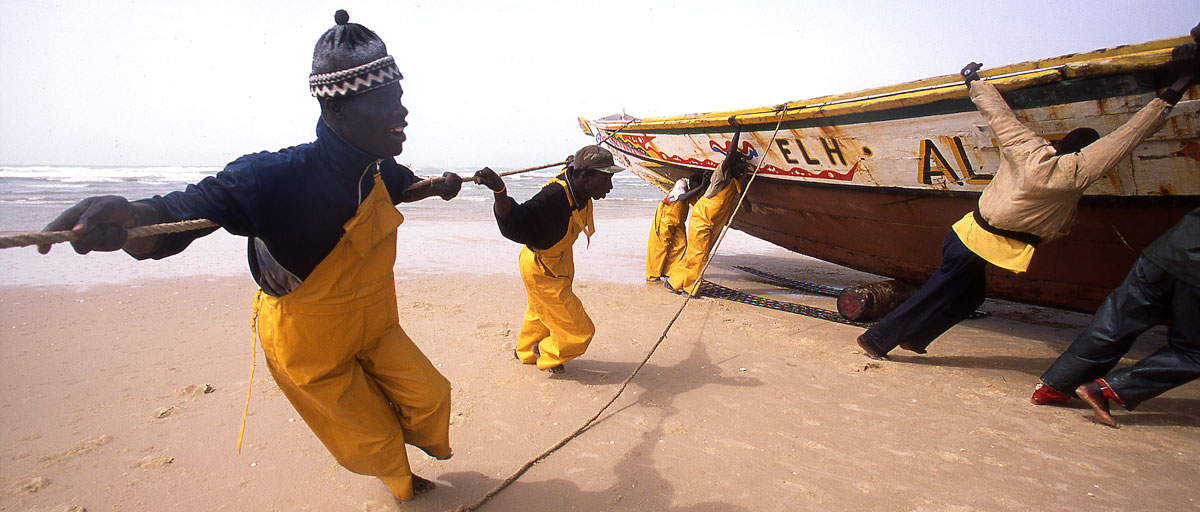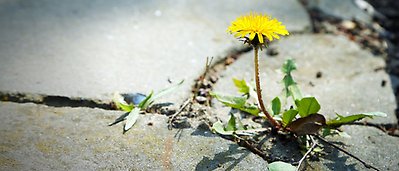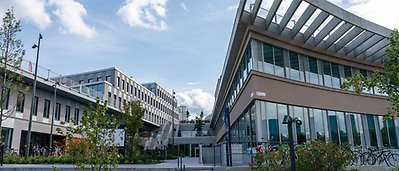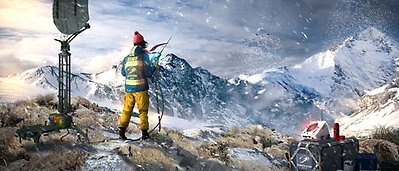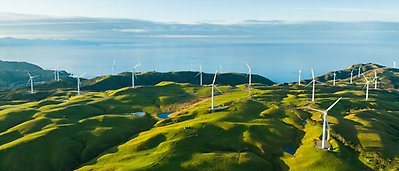Bildtext får vara max två rader text. Hela texten ska högerjusteras om den bara ska innehålla fotobyline! Photo: B. Christensen/Azote
regime shifts
Encroachment
Increase in woody plants are increasingly affecting the African savannahs, reducing grazing for cattle and affecting mobility
- African savannahs have been particularly hard hit by woody encroachment, or the increase in density of woody plants
- Researchers have looked at the combined social and ecological factors that cause the encroachment. Most previous work focused on the direct, ecological drivers of the process
- The analysis highlights that the increasing shift from grassy to woody savannahs are ultimately linked to changing land use, and increased carbon dioxide and global warming associated with growing human populations
Woody encroachment, or the increase in density of woody plants, has been a global problem for over a century, but African savannahs have been particularly hard hit.
Savannahs are home to 505 million people in Africa, most of whom rely directly on the livelihoods developed from the mixed environment of trees and grass. The increase in woody plants not only threatens the provision of food and clean water, but also grazing for livestock and habitats for some of the world’s last remaining mega-herbivores, such as white rhinos and elephants.
In a study recently published in the journal Sustainability, centre researcher Oonsie Biggs together with PhD student Linda Luvuno and colleagues from Stellenbosch University have looked at the combined social and ecological factors that cause woody encroachment in African savannahs.
Most previous work on woody encroachment has focused on the direct, ecological drivers of the process, such as the role of fire or grazing and whether this has either halted or increased the encroachment. Little work has been done looking into the larger scale human and social drivers underlying woody encroachment.
Humans have both local and global influence on savannahs, and that the increasing shift from grassy to woody savannahs are ultimately down to growing human populations.
Linda Luvuno, lead author
The role of fires and population growth
Woody encroachment is basically a shift from a grassy savannah to a persistently closed canopy, woody savannah. One way to conceptualise the process is to view it as a regime shift. These are large, persistent changes in the structure and function of ecological or social-ecological systems. The reason behind a regime shift is usually the combination of internal and external changes that push a system towards change. A shock to the system, for instance a period of intense drought, can eventually tip the system (such as the savannah) into a new state which is difficult and expensive to reverse.
For example, the collapse of Canada´s Newfoundland cod fishery in the early 1990s directly affected the livelihoods of some 35,000 fisherman and fish processing plant workers, and led to a decline of over $200 million dollars per annum in cod landing revenues.
The release of trees from browsing pressure in a study in Mozambique resulted in tree cover increases ranging from 57% to 134% over a 35 year time period –with no directional trend changes in fire and rainfall.
In African savannahs, the direct causes of woody encroachment are a reduced fire frequency and intensity. Fire reduces the number of seedlings and tree density in savannas, and prevents canopy closure which ensures there is sufficient light to maintain a high grass biomass. A high grass biomass, which in turn is based on soil moisture and nutrients, light and the extent of grazing is necessary for more frequent and intense fires. But there are other, indirect drivers too, closely related to human actions. Population growth, urbanisation, land use and even world views are driving gradual changes in African savannahs.
Says lead author Linda Luvuno from Conservation Ecology and Entomology at Stellenbosch University:
"Our analysis highlights that humans have both local and global influence on savannahs, and that the increasing shift from grassy to woody savannahs are ultimately down to growing human populations."
As human population grows, food demand increases incentives to increase cattle numbers. This in turn reduces the abundance of grasses which gives trees a competitive edge and facilitates encroachment. At a bigger scale, a rapidly urbanising planet means more people move to live in cities, leaving rural and agricultural areas depopulated, which also facilitates encroachment through lower demand for firewood, timber and reduced fire frequency.
"Rapid urbanization is also linked to the anthropogenically-driven global warming and increased atmospheric carbon dioxide concentrations which have been found to accelerate root growth, enhance tree resprouting after a fire, and enhance tree water use efficiency," Luvuno explains.
Then there are mental models and world views. South Africa’s changing social and political situation provides a great example of how interlinked social and ecological systems are and how that can lead to regime shifts. The Apartheid government forced the majority of black people into smaller portions of land, which led to overgrazing in communally managed areas. A democratic government then gave people the freedom to live wherever they wanted, which increased the migration to urban areas.
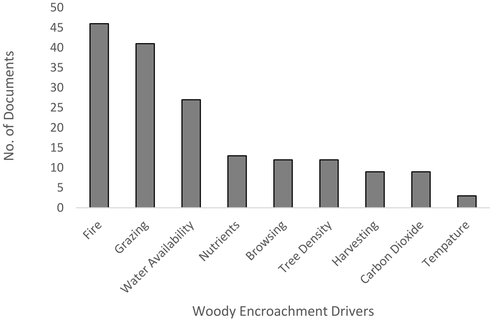
Number of documents reporting significant impacts of different drivers of woody encroachment. Click on illustration to access journal article
How to halt the encroachment
When discussing ways to better manage (and ultimately halt) woody encroachment, Oonsie Biggs and her colleagues believe strategic use of high-intensity fires are important, as long as they do not come at the expense of losing tall trees.
"Increasing fire frequency in a system promotes grass regeneration, which has a negative impact on tree seedling establishment,”"Biggs explains.
Furthermore, reintroducing browsers, ranging from goats to elephants, can suppress woody growth. The widespread reduction of browsers is considered a major driver of tree cover increases in Africa. Clearing trees and maintaining tree cover below 40 % is critical for preventing a continued shift from a grassy to a woody system. It is however, a costly effort. Namibia estimates that the total cost for the control of woody encroachment through clearing is US$2.1 billion.
Finally, efforts must be made to reduce grazing pressure and carbon dioxide emissions.
"Encroachment in moist savannahs is largely associated with anthropogenic climate change and increased carbon dioxide emissions which gives trees a competitive edge over grasses. Similarly, increased rainfall frequency are shocks that can overwhelm arid savannahs, pushing them towards a woody regime," Biggs and her colleagues conclude.
Methodology
To identify relevant literature on woody encroachment, the researchers performed a bibliographic search using Scopus. They searched for the key terms “woody encroachment and savannah” and “bush encroachment and savannah” published between 1 January 1984 and 31 December 2015. For each paper, they recorded the proposed driver of woody encroachment and classified these into fire, grazing, browsing, moisture, tree-thinning/harvesting, temperature, tree density, CO2, and nutrients. They used the Regime Shift Database framework to synthesize existing literature on woody encroachment in savannahs from a Social-Ecological Systems perspective. A key aspect of the RSDB approach is the development of a causal loop diagram (CLD) which synthesizes the key drivers and internal feedbacks in a system based on the literature. To develop the CLD, the researchers complemented the literature from the bibliographic search with understanding from additional relevant literature on the dynamics of savannah ecosystems.
Luvuno, L.; Biggs, R.; Stevens, N.; Esler, K. 2018. Woody Encroachment as a Social-Ecological Regime Shift. Sustainability. 2018; 10(7):2221.
Oonsie Biggs' research focuses on regime shifts — large, abrupt, long-lasting changes in the dynamics of coupled social-ecological systems that can have dramatic impacts on human economies and societies.
